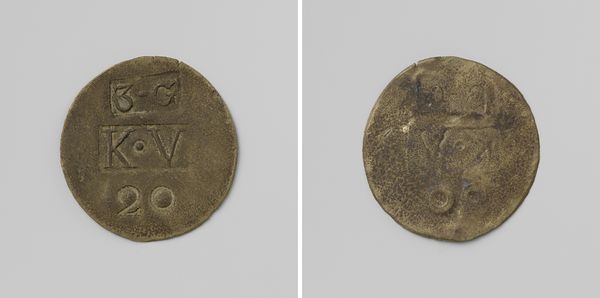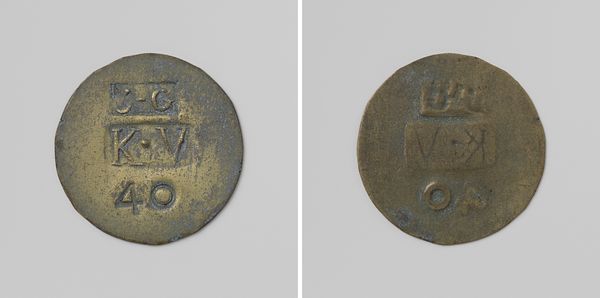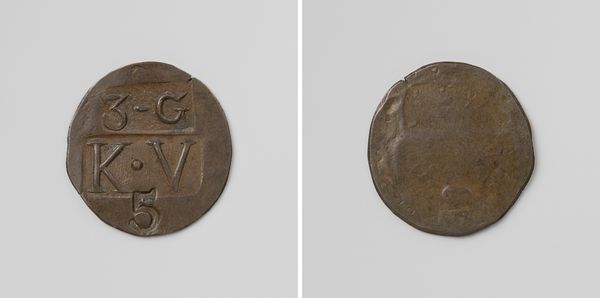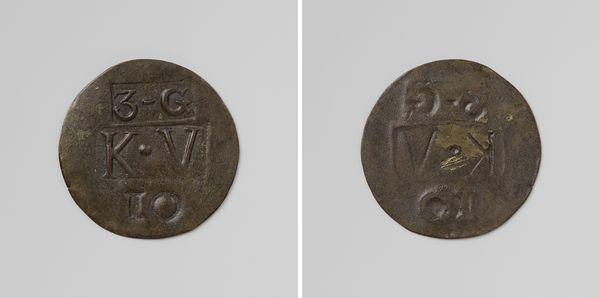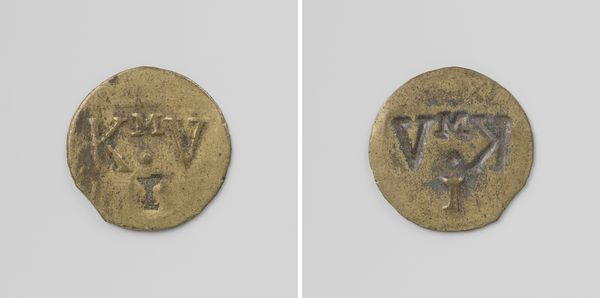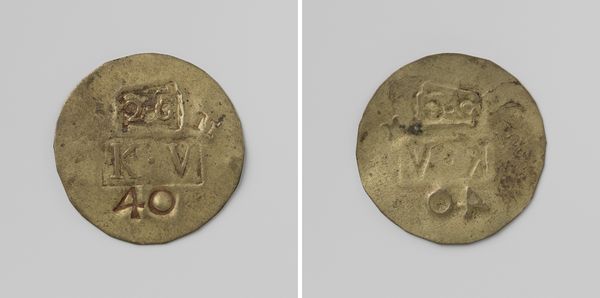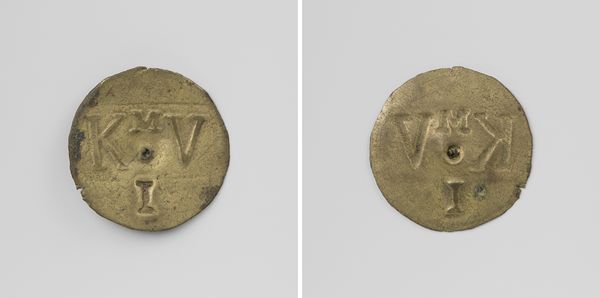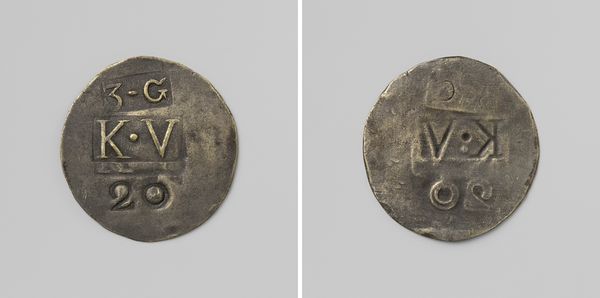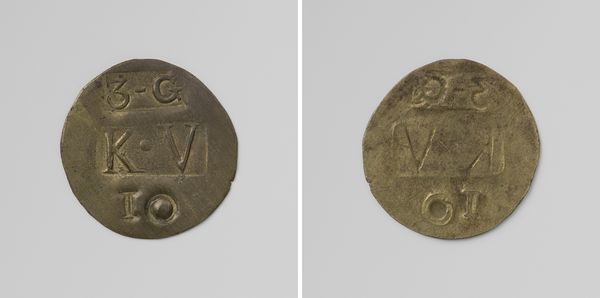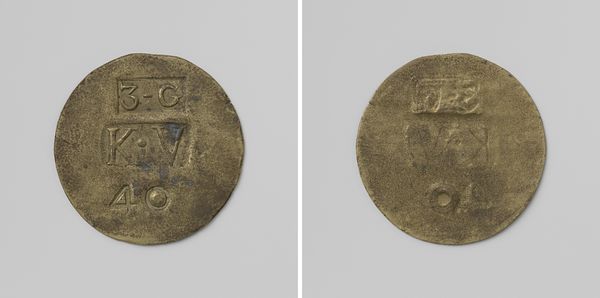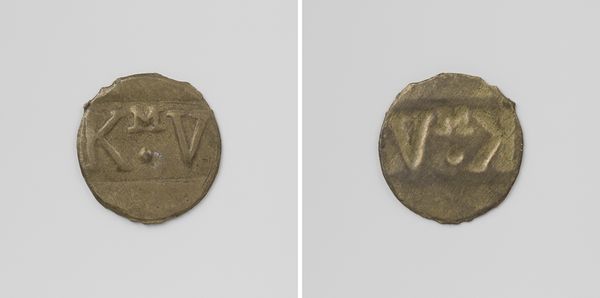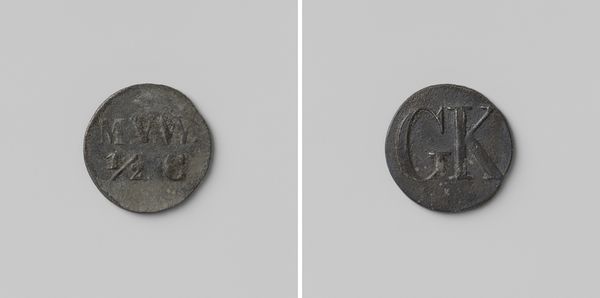
Tweede gesticht van de kolonie Veenhuizen, huismunt geslagen op last van de Maatschappij van Weldadigheid ter waarde van tien cent 1818 - 1859
0:00
0:00
anonymous
Rijksmuseum
print, metal, photography
#
portrait
# print
#
metal
#
photography
#
geometric
Dimensions: diameter 2.8 cm, weight 2.38 gr
Copyright: Rijks Museum: Open Domain
This anonymous coin was minted for use in the Veenhuizen penal colony, established in the Netherlands by the Society of Benevolence. The coin served as a local currency, controlling the exchange of goods and services within the colony. The letters 'K.V.' on the coin stand for ‘Kolonie Veenhuizen’. Established in the early 19th century, Veenhuizen was part of a larger social experiment aimed at poverty reduction through agricultural labor and strict social engineering. This approach reflected the prevailing social attitudes of the time, where poverty was often seen as a moral failing that could be corrected through discipline and re-education. The design of the coin, with its utilitarian appearance, underscores the institutional nature of the colony and its detachment from mainstream society. Understanding such an object requires research into the history of social welfare, penal systems, and economic practices of the Netherlands during this period. By examining archival documents, sociological studies, and period accounts, we can better understand the values and assumptions embedded in this piece of currency.
Comments
No comments
Be the first to comment and join the conversation on the ultimate creative platform.

